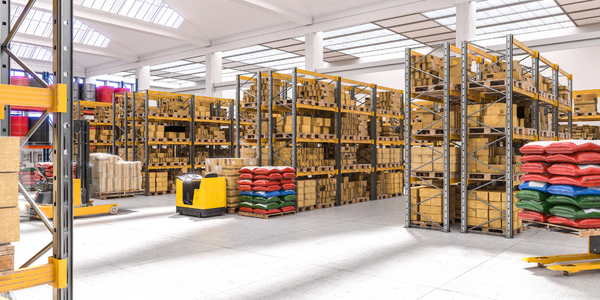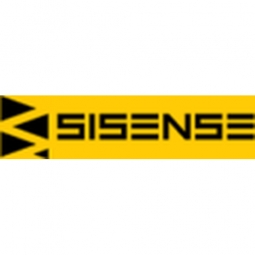下载PDF
Hotel Management Service Provider Builds Better, More Profitable Guest Relationships
技术
- 分析与建模 - 大数据分析
- 分析与建模 - 预测分析
适用功能
- 商业运营
- 销售与市场营销
用例
- 库存管理
服务
- 数据科学服务
- 系统集成
挑战
The hotel industry faces significant challenges with scattered and inconsistent data sets from multiple sources, making it difficult to centralize IT and gain meaningful insights. Property management businesses often use on-site, Windows-based hardware that requires dedicated maintenance personnel, further complicating data integration. Bahadour Moussa, a Technology Evangelist, recognized the need for a BI tool that could store, clean, and prepare data before visualization, enabling hotels to analyze guest behavior and enhance their experience. The search for a suitable BI tool led to the discovery of Sisense, which met the criteria of ease of use, attractive UI, and the ability to connect to complex data sources without requiring ETL work.
关于客户
Boost-inn is a leading hotel management solution provider that helps customers manage multi-property mid-size hotels. They offer an integrated platform that connects to the entire hotel IT ecosystem and now includes business analytics. Their customers are small and medium-sized businesses (SMBs) in the hospitality industry, struggling with scattered and inconsistent data sets and a lack of centralized IT. Boost-inn's platform aims to address these challenges by providing a comprehensive solution that enhances guest engagement and operational efficiency. With a focus on the hospitality sector, Boost-inn serves over a dozen luxury hotel clients across France, managing data for more than 400 rooms per hotel and handling approximately 50,000 reservations annually.
解决方案
Boost-inn integrated Sisense into their hotel management platform to address the challenges of scattered data and lack of centralized IT. Sisense's intuitive UI and ability to connect to multiple complex data sources without requiring ETL work made it an ideal choice. After a successful proof of concept, Boost-inn implemented Sisense across their client hotels, enabling them to analyze guest behavior and operational data. This integration allowed hotels to gain insights into guest preferences, dining habits, and other activities, helping them make data-driven decisions to enhance guest experiences and improve operational efficiency. Sisense's analytics capabilities also enabled hotels to identify regular guests, create targeted marketing strategies, and optimize inventory management in their Food and Beverages departments.
运营影响
数量效益
相关案例.

Case Study
Hospital Inventory Management
The hospital supply chain team is responsible for ensuring that the right medical supplies are readily available to clinicians when and where needed, and to do so in the most efficient manner possible. However, many of the systems and processes in use at the cancer center for supply chain management were not best suited to support these goals. Barcoding technology, a commonly used method for inventory management of medical supplies, is labor intensive, time consuming, does not provide real-time visibility into inventory levels and can be prone to error. Consequently, the lack of accurate and real-time visibility into inventory levels across multiple supply rooms in multiple hospital facilities creates additional inefficiency in the system causing over-ordering, hoarding, and wasted supplies. Other sources of waste and cost were also identified as candidates for improvement. Existing systems and processes did not provide adequate security for high-cost inventory within the hospital, which was another driver of cost. A lack of visibility into expiration dates for supplies resulted in supplies being wasted due to past expiry dates. Storage of supplies was also a key consideration given the location of the cancer center’s facilities in a dense urban setting, where space is always at a premium. In order to address the challenges outlined above, the hospital sought a solution that would provide real-time inventory information with high levels of accuracy, reduce the level of manual effort required and enable data driven decision making to ensure that the right supplies were readily available to clinicians in the right location at the right time.

Case Study
Hardware Retailer Uses Data Warehouse to Track Inventory
Ace tracked which products retailers ordered, when they were ordered and shipped. However, the company could not track or forecast actual sales. Data used for reporting was up to a one-week old, owing to performance and data cleansing issues. Requirement to integrate wholesale and inventory data with POS data to help drive key business decisions, improve category management, lower inventory costs and optimize pricing. Reliance on custom coding to integrate POS data was excessively resource intensive and led to major performance constraints.

Case Study
Remake Enterprise-to-production System
The client was running a legacy material flow tracking system and wanted to replace the system with a more effective one as the system was increasingly expensive to maintain and support and also was not extendable. The client's IT landscape was filled with modern applications and it was difficult to interface the material flow tracking system with modern applications.

Case Study
Expertech - Capital Tool Inventory
Costly tools used to splice fiber optic cables are an important part of Expertech’s operational and capitalized expenses, but the company did not have an automated system in place to track their tools and optimize their usage. The existing data in its tracking system was inaccurate and required manual updating, making it essential for the company to implement an efficient process to track and follow up on its capital tool inventory.







